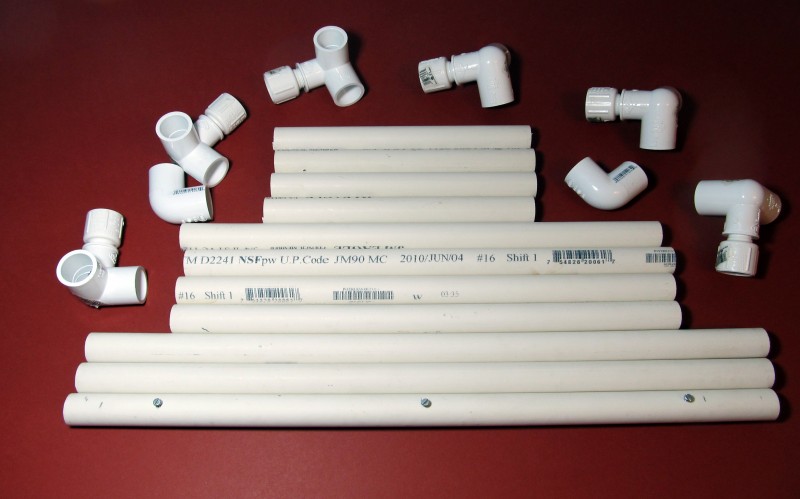
PVC or Polyvinyl Chloride is one of the most, if not the most, widely used plastic piping today. It is relatively inexpensive, comes in various diameters, and can be joined together with solvent and PVC cement.
Because of the various diameters, and the fact it is impervious to water and decay, PVC pipe is ideal for storing items, survival items, for example, in the ground. PVC pipe can be made into survival gear as well, and what it can be used for or made into is only limited by your imagination.
PVC pipe and end caps are joined by using solvent that softens/cleans the material and then by applying PVC cement and twisting the pieces together to ensure the cement is applied evenly. This is sometimes called a solvent weld because the plastic essentially melts together creating a permanent and waterproof seal. White schedule 40 PVC pipe is one of the most common.
Supply Storage
PVC pipe is ideal for storage caches because it can be stored in the ground for decades without any obvious effects on the plastic. You can cement end caps or attach fittings that allow you to unscrew the end caps. Keep in mind that the threaded caps would not be as waterproof as caps that were glued to the pipe using solvent and cement. You can dip the cap end (s) in melted wax to improve the water resistance. The pipe can be painted any color to camouflage it.
If you cement both ends together you will need a way to cut one end off to get to the supplies. Using a knife would not be ideal. You would need a hacksaw or some type of plastic pipe cutting tool. Additionally, if you use cement on both ends and have to cut one end then the pipe cannot be used for storage unless you have another cap along with solvent and pipe cement.
Quiver for Arrows or Bolts
Decide how long you want the quiver and cut to size using a hacksaw blade or you can use a wire wood saw that is common in many survival kits. The wire saws, while they do work to some extent, are not ideal for any heavy duty wood sawing but keep one in your kit for cutting PVC pipe. The pipe can be painted to camouflage it, or use camouflage duct tape.
You can cut a hacksaw blade in half and duct tape or use ranger bands to attach to a knife sheath or pack, so you always have a blade handy to cut the pipe. Attach cordage so the quiver can be carried across the back. Drill drain holes in the bottom to prevent water from collecting in the bottom.
Is PVC Safe for Carrying Drinking Water
White schedule 40 PVC is rated safe for drinking water. There are concerns that the plastic can leach chemicals into the water but PVC has been used since the 1950’s for drinking water, and any pipe manufactured after 1977 is considered safe. Schedule 40 PVC is rated for cold water while CPVC is rated for hot water. White schedule 40 will not withstand hot water temperatures and can cause leaks around seals if used (NSF, 2015).
Therefore PVC pipe schedule 40 can be used to carry drinking water. Cap and solvent weld one of the ends and attach a removable screw cap on the other end. Attach cordage for carrying the water tube, but do not of course, make any holes in the pipe while doing so. Use whatever diameter pipe you feel you can carry once filled with water.
Water Collection
Cut a two or three inch section from half of the pipe leaving a small trough that can be used to channel water dripping down from a corner of your shelter or to collect water from dripping vegetation and then into a collection vessel.
You can make a (continue reading)

